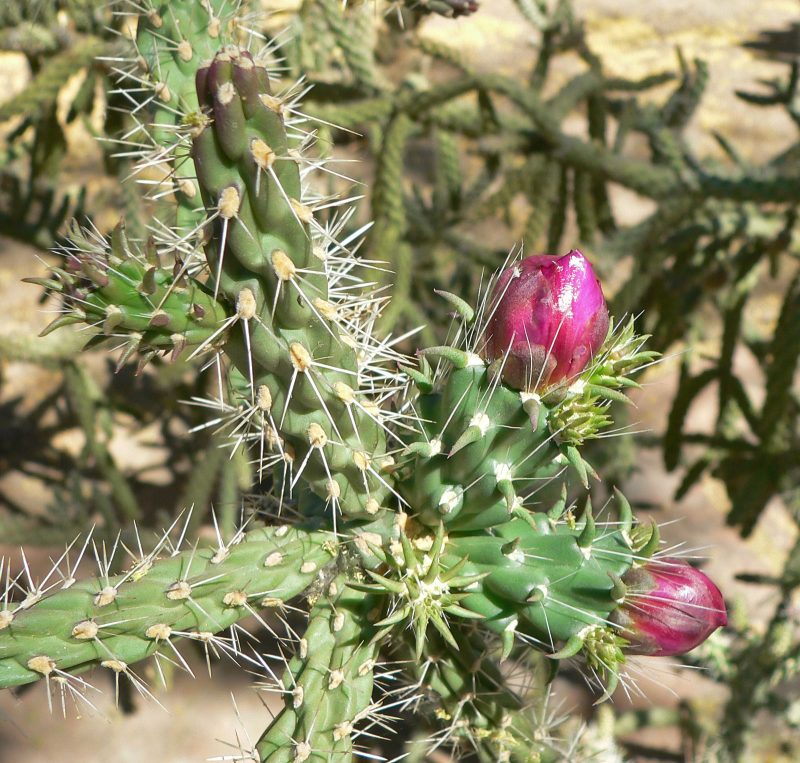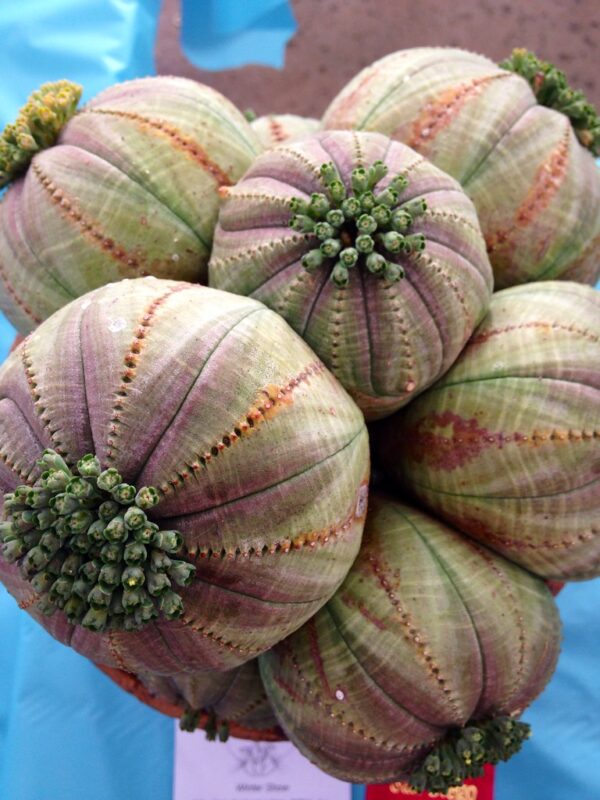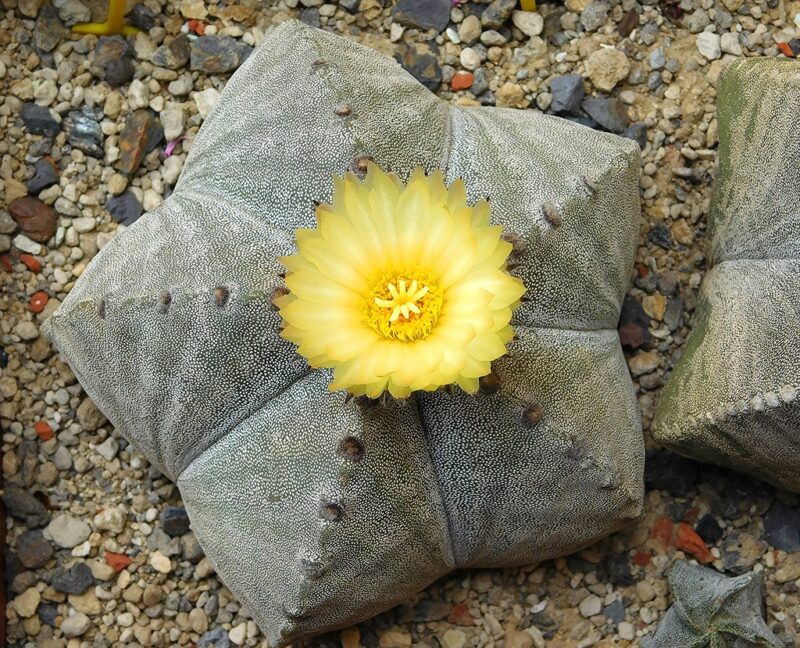Deserts are often seen as barren wastelands, devoid of life and color, but beneath their harsh surface lies an incredible array of unique plants finely adapted to survive in extreme conditions.
These rare desert plants—each with its own distinctive adaptations—have developed remarkable traits that not only allow them to endure but thrive in their challenging environments. In
Below, we explore some of the most fascinating examples of these remarkable plants.
Welwitschia Mirabilis

Welwitschia mirabilis is a truly extraordinary plant native to the Namib Desert of Namibia and Angola. This unique species is often described as a living fossil due to its strikingly unusual appearance and its resilience. The plant consists of only that grow continuously throughout its life, which can span for over 1,000 years. The leaves can reach impressive lengths, sometimes stretching several meters, and they take on a frayed, ragged appearance as they age, reminiscent of a pair of giant wings. Welwitschia thrives in the desert’s arid environment by relying on fog for moisture, absorbing water through its leaves. Its ability to adapt to such extreme conditions has fascinated botanists and nature enthusiasts alike.
Baobab Tree

Often referred to as the “Tree of Life,” the baobab tree (Adansonia) is iconic in the dry savannah regions of Africa and is also found in Madagascar and Australia. Its distinctively swollen trunk can store thousands of liters of water, helping it survive long periods of drought. The baobab has a striking silhouette, making it a cultural symbol in many societies. Its leaves, which emerge only in the rainy season, provide shade and food for various animals. The tree is known for its long lifespan, with some specimens estimated to be over a thousand years old. Baobabs also produce a nutrient-rich fruit, known as monkey bread, that is prized for its health benefits.
Hydnora Africana

Hydnora africana is a bizarre and fascinating plant endemic to southern Africa. Unlike most plants, it is primarily subterranean and spends most of its life underground, emerging only to produce its striking flowers. These flowers, which can be as large as a human head, are adapted to attract specific pollinators, primarily dung beetles. The plant is a parasite, relying on the roots of nearby hosts for nutrients. Its unusual life cycle and reliance on specific ecosystems make Hydnora africana a rare gem in the desert flora of southern Africa.
Jumping Cholla

The jumping cholla (Cylindropuntia fulgida) is notorious for its ability to latch onto unsuspecting passersby. Found primarily in the southwestern United States and Mexico, this cactus produces segments that detach easily, creating the illusion of “jumping” onto a person or animal. The segments are covered in spines that can inflict painful injuries. Despite its fearsome reputation, the jumping cholla plays a crucial role in its ecosystem, providing food and shelter for various desert animals. Its ability to thrive in harsh conditions and proliferate quickly makes it a quintessential desert plant.
Baseball Plant

The baseball plant (Euphorbia obesa) is an unusual succulent native to South Africa, distinguished by its round, baseball-like shape. This plant is a member of the euphorbia family, characterized by its thick, cactus-like exterior and a unique pattern of vertical ribs. The green and sometimes grayish color of its surface helps it absorb sunlight efficiently while minimizing water loss. The baseball plant prefers rocky or sandy soils, making it well-suited to its arid environment. Due to habitat destruction and over-collection for ornamental purposes, it has become increasingly rare in the wild.
Desert Ironwood

Desert ironwood (Olneya tesota) is a durable tree that thrives in the Sonoran Desert of Arizona and Mexico. This tree is renowned for its exceptionally hard and heavy wood, which is highly valued for its strength and resistance to rot. The desert ironwood has a slow growth rate but can live for several hundred years. Its roots help stabilize the desert soil and provide crucial habitat for various desert creatures. This remarkable tree is an essential component of its ecosystem, offering shade and nourishment to diverse wildlife.
Silver Torch Cactus

The silver torch cactus (Cleistocactus strausii) is an eye-catching columnar cactus found in the high-altitude regions of Bolivia and Argentina. Its silvery spines provide an appealing contrast against the green stem, and it can grow to impressive heights of up to ten feet. The silver torch cactus blooms beautiful red flowers in the spring and summer, which are often pollinated by hummingbirds drawn to their vibrant colors. Its adaptability to cold temperatures sets it apart from many other cacti, making it a unique specimen among desert plants.
Wollemi Pine

Although not exclusively a desert plant, the Wollemi pine (Wollemia nobilis) is worth mentioning due to its extraordinary rarity. Discovered in Australia in 1994, this ancient tree was believed to be extinct for millions of years. The Wollemi pine can grow in a variety of ecosystems, including dry mountain forests, showcasing its remarkable adaptability. Its unique, feathery foliage grows on a straight trunk, earning it the nickname “dinosaur tree.” Conservation efforts are underway to protect this species and promote its growth in botanical gardens worldwide.
Saguaro Cactus (Carnegiea gigantea)

The saguaro cactus is undoubtedly one of the most iconic symbols of the Western United States. Towering as high as 40 feet, this giant cactus can live for over 150 years. Saguaro cacti have a unique structure, with arms that begin to develop when the cactus is around 50 to 70 years old. During the blooming season, they produce beautiful white flowers that open only at night, attracting pollinators such as bats and moths. The fruits of the saguaro are harvested by local Indigenous communities for food and ceremonial purposes, emphasizing the plant’s cultural significance.
Golden Barrel Cactus (Echinocactus grusonii)

The golden barrel cactus is a stunning example of desert flora, renowned for its spherical shape and vibrant golden spines. Native to the deserts of Mexico, this cactus can grow to be quite large, often reaching sizes comparable to a beach ball. Its form allows it to conserve water effectively, while its thick skin protects it from the harsh sun. The golden barrel cactus produces bright yellow flowers that bloom in the spring, attracting various pollinators. Due to habitat loss and overcollection for gardens, it has become endangered in its native habitat.
Organ Pipe Cactus (Stenocereus thurberi)

This unique cactus is characterized by its tall, upright growth, with multiple arms that resemble organ pipes. Native to the Sonoran Desert, the organ pipe cactus can thrive in extreme heat and its spines provide defense against herbivores. It blooms beautiful, fragrant white flowers that open at night, drawing bats and moths for pollination. The organ pipe cactus is also valuable for its ability to form dense stands, creating unique habitats for various desert wildlife.
Fishhook Barrel Cactus (Ferocactus wislizeni)

The fishhook barrel cactus is named for its distinctive hooked spines that resemble fishhooks and provide a formidable defense against herbivores. This cactus, native to the southwestern United States, is easily recognized by its barrel shape and bright yellow to red flowers that bloom during the summer. It serves as an important water source for many animals, and its fruit is edible and nutritious for both humans and wildlife. Besides its beauty, this cactus plays a crucial role in its ecosystem.
Teddy Bear Cholla (Cylindropuntia bigelovii)

The teddy bear cholla gets its name from its fuzzy appearance, which belies the painful spines hidden amongst its soft-looking pads. Native to the deserts of Arizona and California, the teddy bear cholla can easily shed segments that attach to passersby, creating a painful experience for those who venture too close. Despite its intimidating defenses, this cactus provides vital shelter and food for a variety of desert animals, including birds and rodents. Its ability to thrive in arid conditions while providing habitat highlights its importance in desert ecosystems.
Queen of the Night (Peniocereus greggii)

The queen of the night is a night-blooming cactus known for its spectacular flowers that bloom for just one night each year. Native to the southwestern United States and Mexico, the large, white blooms emit a sweet fragrance, attracting nocturnal pollinators. This cactus often grows as a long, slender stem with several branches, and while its flowers are short-lived, they are celebrated for their beauty. The queen of the night serves as a reminder of the ephemeral beauty found in the desert landscape.
Pincushion Cactus (Mammillaria spinosissima)

The pincushion cactus is a charming and small species native to the southwestern United States and Mexico. With its globular shape and densely packed spines, this cactus resembles a pincushion, hence its name. Pincushion cacti produce lovely pink or white flowers that bloom in clusters, often creating a spectacular sight in the arid landscape. Their small size allows them to survive in less hospitable areas, providing food and habitats for insects and small animals.
Old Man Cactus (Cephalocereus senilis)

The old man cactus is a striking plant native to Mexico, famous for its long, white, hair-like spines that give it a distinctive old-man appearance. These spines serve the dual purpose of protecting the cactus while also providing some shading from the harsh sun. The old man cactus can grow to impressive heights, making it an iconic feature of the desert landscape. Its structure allows it to store water effectively, ensuring its survival in arid conditions.
Cardón Cactus (Pachycereus pringlei)

The cardón cactus is one of the largest cactus species in the world, reaching heights of over 60 feet. Native to the Sonoran Desert, it plays a vital ecological role as a provider of food and shelter for many desert animals. The cardón has a tall, columnar shape, and its flowers bloom at night, attracting nocturnal pollinators. This majestic cactus is an emblem of the desert’s resilience and biodiversity, showcasing the incredible adaptability of desert plants.
Living Rock Cactus (Ariocarpus fissuratus)

The living rock cactus is a fascinating and rare species native to Mexico. Its unique appearance, resembling a rock formation rather than a traditional cactus, allows it to blend seamlessly into its environment, providing protection from herbivores. This slow-growing cactus has a variety of adaptations that help it survive with minimal water, including deep taproots. Its rarity and unique morphology make it a cherished specimen among collectors and enthusiasts.
Beavertail Cactus (Opuntia basilaris)

The beavertail cactus is a low-growing species native to the southwestern United States and Mexico. It is notable for its vibrant pink flowers that bloom in the spring, attracting pollinators and adding a beautiful splash of color to the desert landscape. The pads of the beavertail cactus are edible and cherished for their culinary uses, rich in vitamins and nutrients. This resilient cactus thrives in rocky soils, further enhancing the diverse plant life found in its habitat.
Senita Cactus (Pachycereus schottii)

The senita cactus is a columnar cactus found primarily in the Sonoran Desert. It has a tall, slender appearance and can reach considerable heights. This cactus is known for its striking flowers that bloom during the night, attracting various pollinators. The senita is a crucial habitat for a variety of creatures, as its structure provides shelter and nesting locations. Like many desert plants, it demonstrates how life can flourish in challenging environments.
Creeping Devil Cactus (Stenocereus eruca)

The creeping devil cactus is a unique species that drops its segments as it grows, allowing it to establish new plants as it spreads across the landscape. Its twisted, creeping growth habit gives it an interesting appearance, making it a curious sight in the desert. Native to Mexico, this species thrives in harsh, arid conditions and produces beautiful flowers that bloom at night. The ability to propagate through its segments helps ensure its survival in challenging habitats.
Turk’s Cap Cactus (Melocactus matanzanus)

The Turk’s cap cactus is a distinctive species characterized by its rounded body and the crown of bright pink or red flowers that form on its top. Native to tropical regions of the Caribbean and parts of Mexico, this cactus is often found in dry, rocky areas. It flourishes in warm climates and produces fruit that is edible and enjoyed by both wildlife and humans. The Turk’s cap cactus is known for its striking appearance and resilience, making it a valuable addition to any desert ecosystem.
Bishop’s Cap Cactus (Astrophytum myriostigma)

The bishop’s cap cactus, recognizable by its unique star-shaped profile, is native to the arid regions of Mexico. This small, globular cactus features distinct patterns of white flecks on its surface, giving it a captivating appearance. It is well-suited to rocky, well-drained soils and thrives with minimal care. The bishop’s cap also produces yellow flowers, which stand out beautifully against its green body during the blooming season. This resilient species exemplifies the diverse and intricate beauty of desert plants.
Paper Spine Cactus (Tephrocactus articulatus)

The paper spine cactus is a unique species known for its segmented, cylindrical structure and light, feathery spines. Native to Argentina, this cactus has adapted to harsh desert environments through its unique morphology and water-retaining capabilities. The name “paper spine” refers to its remarkably thin and soft spines, which can easily detach. Its fruit and flowers add to its appeal, drawing in various desert wildlife while contributing to the ecological diversity of the regions where it thrives.
Chin Cactus (Gymnocalycium mihanovichii)

The chin cactus is a small, colorful species known for its vibrant, often neon-colored tops that can contrast dramatically with its green base. Native to South America, this cactus prefers a humid and warm environment, showcasing its adaptability amid the dry climate. Its aesthetically pleasing appearance makes it popular among indoor gardeners and collectors. The chin cactus represents the stunning diversity of desert flora, illustrating how vibrant life can emerge from the harshest conditions.
Claret Cup Cactus (Echinocereus triglochidiatus)

The claret cup cactus is another striking plant endemic to the southwestern United States, recognized for its unique, cylindrical shape and vibrant red flowers that bloom in the spring. Found in rocky habitats, this cactus has adapted to thrive in arid and exposed areas. Its flowers attract hummingbirds and other pollinators, showcasing its crucial role in the desert ecosystem. The claret cup cactus adds a splash of color to the desert landscape, illuminating its beauty and resilience.
Each of these rare desert plants offers a fascinating glimpse into the diversity of life that can endure the harshest environments, highlighting the importance of conservation and appreciation for our planet’s unique ecosystems. From the living fossils of the Namib Desert to the vibrant blooms of the Sonoran Desert, these plants exemplify resilience and adaptability, reminding us of the beauty that exists in even the most challenging habitats.





